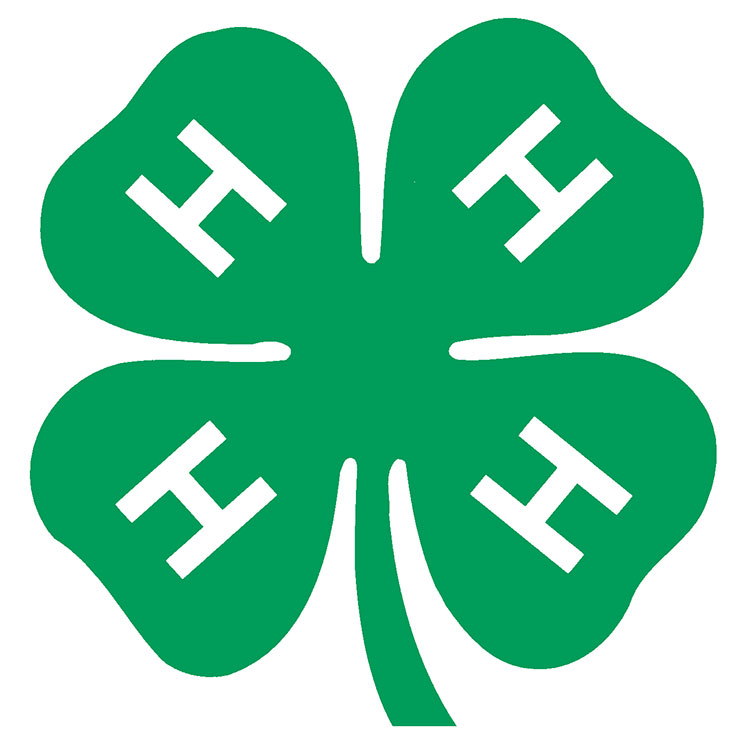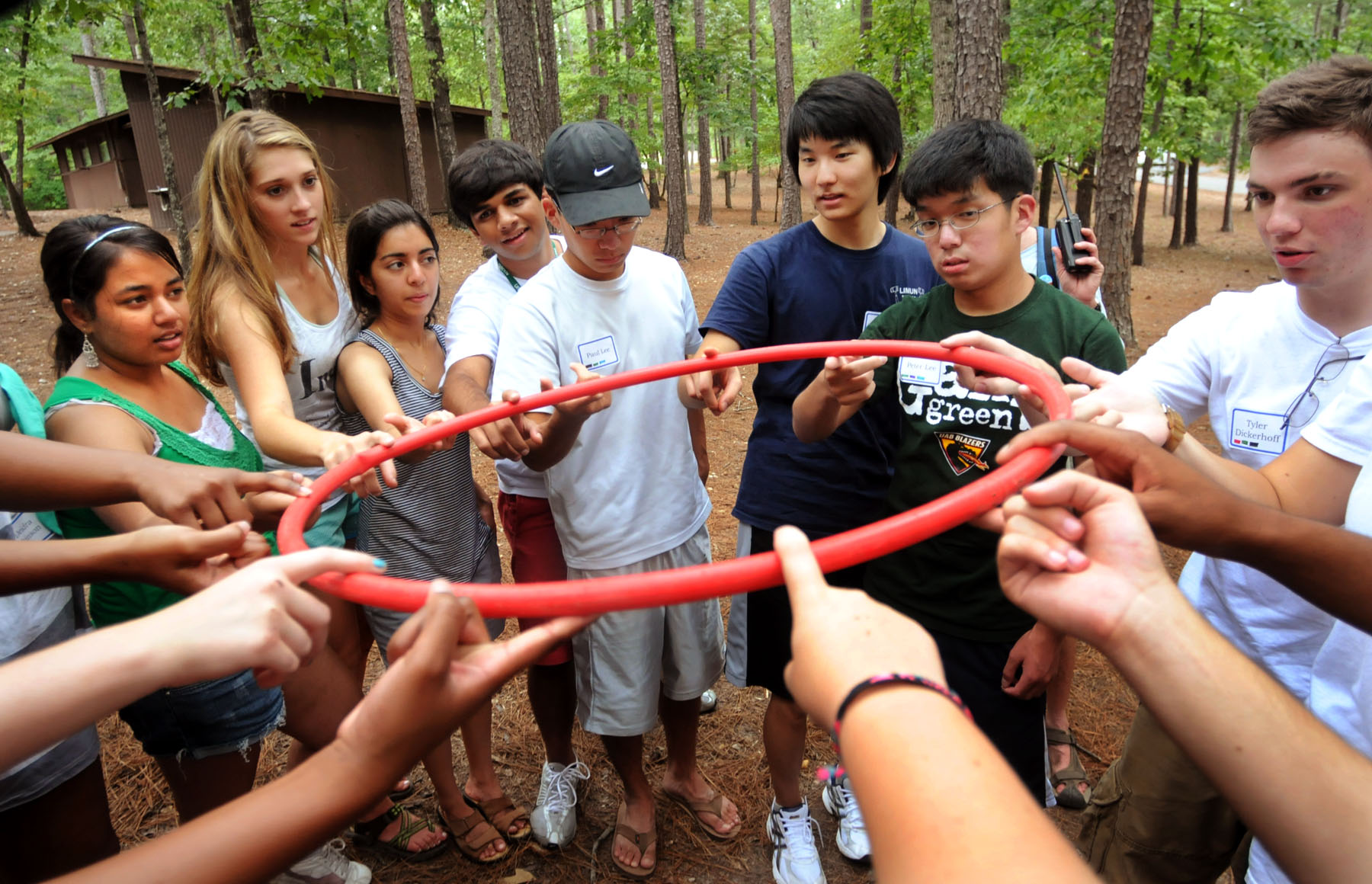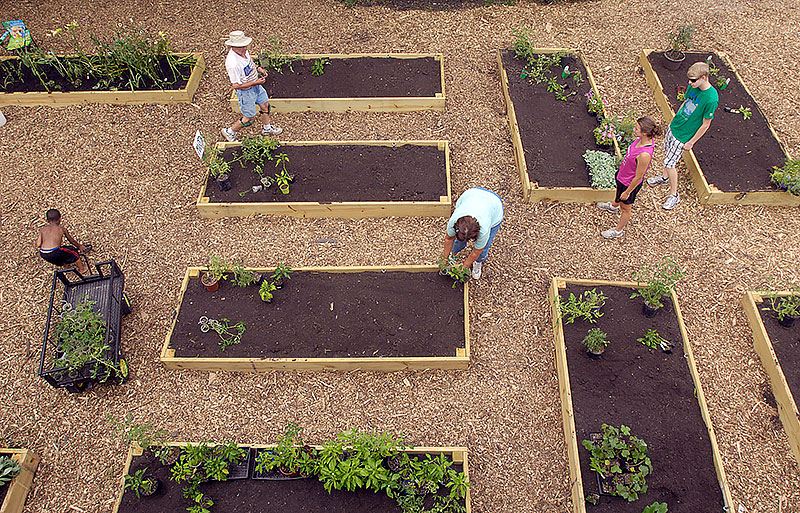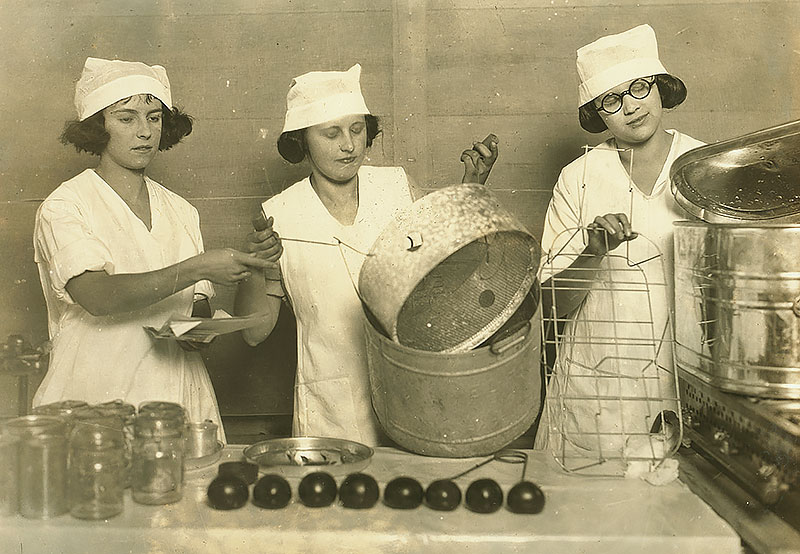
4-H is a youth organization that helps young people learn skills, serve their communities, and gain real-world experience. 4-H programs operate in more than 70 countries around the world. In the United States, millions of young people participate in 4-H. Hundreds of thousands of adults serve as volunteer leaders. The 4-H emblem is a green four-leaf clover. It has a white H on each leaf. The four H ’s stand for head, heart, hands, and health.
The 4-H movement began in the United States during the early 1900’s. At first, 4-H programs revolved around after-school clubs and fairs with an emphasis on agriculture and related activities. Participants worked on projects such as canning, raising livestock and poultry, and growing crops. Today, only about 11 percent of 4-H members in the United States live on farms. The modern organization serves youth in rural, urban, and suburban communities in every U.S. state.
Members of 4-H work on a variety of projects and activities. These projects and activities focus on citizenship, healthy living, and science. 4-H also operates a number of programs, both in and out of schools. The programs educate members in such areas as agriculture, computer science, environmental protection, robotics, rocketry, and sustainable energy.
The Cooperative Extension System guides 4-H work in the United States. The system is a nationwide educational network (see Cooperative Extension System ). The extension system works in cooperation with state land-grant universities. Such universities are partly endowed by the U.S. government (see Land-grant university ). An extension office in nearly every U.S. county employs one or more agents. The agents recruit and assist local 4-H volunteer leaders. They also help members with projects.
Organization
In the United States, anyone 9 to 19 years old may become a member of 4-H. Some states also have a program—usually called Cloverbuds—for children from 5 to 9 years old. College-aged youths can join a program called Collegiate 4-H. In Canada, the ages for membership vary depending on the province.

Young people may participate in 4-H through a variety of programs, including 4-H clubs, 4-H camps, and both afterschool and in-school programs. Youth may also form a 4-H special interest club. Members of a special interest club work on a joint project or workshop. In addition, 4-H offers membership through individual study programs and instructional television programs.
Slogans and symbols.
4-H encourages members to “Join the Revolution of Responsibility.” This slogan refers to a movement for positive change in communities. Young people are challenged to make measurable differences wherever they live.
4-H members reinforce their high standards with the motto, “To Make the Best Better,” and with this pledge:
I pledge My Head to clearer thinking, > My Heart to greater loyalty, > My Hands to larger service, and > My Health to better living, > For my club, my community, my country, and my world.
There is no official 4-H uniform. However, many members wear 4-H pins or clothing with the 4-H clover emblem or other identification.
Members and volunteers.
Young people may join a 4-H program already in their community. Or they may organize a new club or group. In the United States, members join through their county extension office. In Canada, they enroll through the provincial 4-H agencies. Local clubs operate throughout the United States and Canada.
Volunteers are essential to the success of the 4-H program. Most 4-H clubs choose their own adult volunteer leaders. Many select a parent or other relative of a club member. Adult volunteer leaders donate their time, provide transportation, and purchase some teaching materials. They help members with their projects and activities and also may lead a project group.
Teenagers may become junior or teen leaders after several years of 4-H work. They assist adult leaders. They also help younger members with their work and with their project records.
Government organization.
County extension agents help organize 4-H programs within the county. They also help train local volunteer leaders.
Each state has a 4-H leader at the state land-grant university. State leaders and their staff choose the 4-H projects their state will offer. They organize statewide 4-H events. They also help prepare aids and materials for members and volunteer leaders.
On a national level, 4-H in the United States is directed by an assistant deputy director and a staff for 4-H and youth programs in the U.S. Department of Agriculture. In Canada, most 4-H programs are administered by the provincial departments of agriculture.
The National 4-H Council
in the United States supports 4-H work on a nationwide basis. The council is a private, not-for-profit partner of 4-H National Headquarters. The council raises funds, organizes 4-H programs and events, manages communications and the 4-H brand, and develops resources for 4-H professionals and volunteers.
The National 4-H Council also operates the 4-H Mall. The mall is an online store that sells 4-H branded items, such as shirts, pens, and mugs. In addition, the council operates the National 4-H Youth Conference Center in Chevy Chase, Maryland. The center offers 4-H members summer courses on leadership and citizenship. The center also offers leader-training and professional development sessions.
The National 4-H Council was established in 1976. The council resulted from the merger of two previous 4-H organizations—the National 4-H Service Committee and the National 4-H Foundation. A board of trustees administers the National 4-H Council. Its work is supported by contributions from corporations, foundations, and individuals. The national 4-H website at www.4-H.org provides additional information.
Canadian groups.
Two national groups—the Canadian 4-H Council and the Canadian 4-H Foundation—provide educational support. The council coordinates 4-H programs and events in Canada. The foundation raises funds for 4-H. Members of both groups represent business and nonprofit organizations as well as the national and provincial governments. The council and foundation headquarters are in Ottawa, Ontario.
Projects and activities
Members of 4-H serve their communities with one or more special projects a year. For example, a 4-H club might plant trees or conduct a bicycle safety program. Many clubs and groups prepare educational exhibits for community fairs.
Individual projects.
Each 4-H member carries out at least one project a year. In most states, a member may select the project from a list of 50 to 100 choices. Members may also design their own projects. A 4-H project may involve almost any subject that encourages the young person to learn and to use the imagination. Most projects involve working with and improving the local community.
Some subjects have several project levels. Members may continue working in these subject areas over a number of years. Other projects are for certain age groups. For example, projects for older members include studies about possible career choices or health issues such as drug abuse and physical fitness.
Many 4-H members who live in rural areas choose projects that deal with crops and livestock, forestry, and marketing. Both urban and rural members enjoy projects involving clothing, computers, home improvement, nutrition, public speaking, and the conservation of natural resources.

Various 4-H projects that were once limited to farm youngsters have been developed to serve members in cities as well. A rural youth, for example, may choose a project in raising and caring for a horse. A city youth who does not own a horse may select a project in horsemanship. Projects that once helped rural youth learn how to raise crops have also been made more flexible for city members. For example, suburban youths may learn how to plant large community gardens. Inner-city members who have limited space may learn how to tend backyard plots, window boxes, or indoor plants.
Each 4-H member receives a booklet that explains the requirements of the selected project. The booklet also includes information and questions to make the member think and learn about the subject. For example, a booklet for a project involving food, nutrition, and fitness might include information on consumer choices, food groups, and exercise.
The county extension office provides visual aids and other teaching materials to 4-H members. County agents and volunteer leaders visit members at home to review their projects.
Many 4-H members finish a year’s project by preparing an educational exhibit about their subject for a local or county fair. Other members finish their project work by taking part in computer demonstrations, public speaking contests, or other special activities related to their projects. Some members prepare talks and demonstrations to share what they have learned. Members may earn medals, certificates, ribbons, trophies, and scholarships for their work.
Group activities.
Teenagers interested in a particular subject may organize a joint project or workshop dealing with that subject. Members of such 4-H special interest groups need not belong to a local 4-H club. After completing a project or workshop, the group may start another one. Or the members may join other special interest groups.

Most 4-H clubs and groups carry out community service activities. For example, they may assist blood drives in their neighborhood. Or they may lead community beautification programs. Many 4-H clubs and groups fight such problems as drug abuse and pollution. Members may help people with disabilities, elderly citizens, and impoverished communities.
4-H members often meet in groups for recreation. They hold picnics and sporting events and go on hikes. Some clubs organize music and drama programs. Camping is a favorite 4-H activity. Thousands of members attend 4-H camps each summer.
Older 4-H members may join county senior clubs and councils or county junior leader groups. Members of these organizations are especially active in community service programs. Older 4-H members also develop leadership abilities as they help younger members with their projects.
National, state, and county events
Soon after Thanksgiving each year, hundreds of U.S. 4-H members meet for the National 4-H Congress. Most delegates (chosen representatives) receive free trips to the congress as winners of state, sectional, or national 4-H contests. These contests cover such areas as 4-H projects or citizenship. The congress also honors individuals and businesses for their service to 4-H. Delegates discuss problems that affect young people in the United States. They also hear speeches by leaders in agriculture, government, industry, and science.
Each spring, delegates from the United States and Canada attend the weeklong National 4-H Conference in Chevy Chase. These delegates include both young people and adults. They tour the city and attend workshops to discuss contemporary issues and plan future 4-H programs.
The United States observes National 4-H Week each year during the first full week of October. During the same week, the nation celebrates 4-H National Youth Science Day, a rallying event for 4-H science programs. Newspapers, magazines, radio, and television programs showcase the achievements of young 4-H members.
Many states sponsor meetings similar to the national conferences. Other events sponsored by states and counties include fairs, workshops, camps, and exhibitions.
Each November, the Canadian 4-H Council sponsors a weeklong National 4-H Conference in Toronto. Both Canadian and U.S. 4-H members participate in the conference. The members tour Toronto, meet with government and business officials, discuss current social and economic issues, and exchange ideas about 4-H work.
History
The roots of the 4-H movement can be traced back to the late 1800’s. Scientific advances at the time held the potential to make farming easier and more efficient. But researchers at public universities noticed that adults in rural communities were often slow to adopt such advances. The researchers found that young people, on the other hand, were more open to new ways of doing things. Researchers believed that they could introduce agricultural advances to farming communities by teaching them to young people. They thought that young people would be more likely to experiment with new technology and would share their discoveries with adults in their communities.

The desire to connect school education to country life led to the development of hands-on learning programs. Early programs used both public and private resources to help rural youth. A number of community-based programs helped youths learn about industrial advances and solve agricultural challenges.
The first 4-H program
was an agricultural club in Clark County, Ohio. A. B. Graham, an American educator, began the program in 1902. It was variously called the Tomato Club or the Corn-growing Club. In the same year, the American educator T. A. (Dad) Erikson of Douglas County, Minnesota, organized agricultural clubs and fairs that met after school. An Iowa educator named Jessie Field Shambaugh organized similar clubs. She also designed the clover symbol in 1910, earning her the nickname “the mother of 4-H.”
In 1914, the Smith-Lever Act established what is now the Cooperative Extension System. The Smith-Lever Act also granted states federal funds to organize boys’ and girls’ agricultural clubs. By the mid-1920’s, these clubs were known as 4-H clubs and used the clover emblem.
Agricultural clubs grew more slowly in Canada. The first clubs began in 1913. But they were not organized nationally until 1931, when the government formed the Canadian Council on Boys’ and Girls’ Clubs (now called the Canadian 4-H Council).
Expansion.
4-H clubs spread throughout the United States, with extension staff at county and state offices supporting the program. Such staff members provided research-based information, informal education, and technical advice directly to individuals, families, and communities. Over time, 4-H programs began focusing on urban and suburban communities in addition to rural communities.

In 1948, the International Farm Youth Exchange began sending young people to experience farming in other countries. The exchange helped expand 4-H’s presence around the globe.
In 2010, 4-H launched its “Join the Revolution of Responsibility” campaign. The campaign showcased 4-H members’ positive effects on their local communities.
See also Agricultural education ; County agricultural extension agent .
